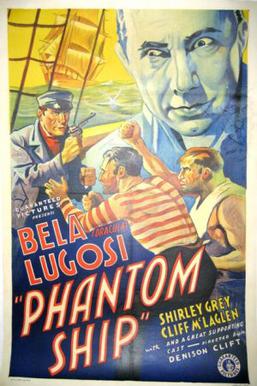Influence
The story popularised the mystery of the Mary Celeste . Doyle drew heavily on the original incident, but some of the fictional elements that he introduced have come to replace the real events in the popular imagination. Doyle changes a number of details, including the names of the captain, crew, and passengers, and also the name of the vessel, from Mary Celeste to Marie Celeste. [1] [2] In the story, the ship is in an almost perfect state when discovered, and the lifeboats are still present, whereas the Mary Celeste had been in heavy weather and was waterlogged, and her one boat was missing.
The fictional story reached a much wider audience than the original story of the Mary Celeste, which has led to the widespread belief that Marie Celeste was the name of the real ship. [3] The change to the ship's name possibly was accidental, since Doyle did not change the name of the Dei Gratia, the ship that salvaged the Mary Celeste. [4]
Synopsis
The protagonist, Jephson, is a white American doctor. He explains that he was wounded while fighting for the Union during the American Civil War and was nursed back to health by an elderly black woman, who was aware of his abolitionist work before the war. As a way of thanks, she gave him a small, carved, black stone, which she claimed was a lucky charm that had been in her family for many generations, and that it would keep him from harm.
Eleven years later, Jephson develops a severe cough and is advised by a specialist to visit Europe, where the clear air might cure him. In Boston, he books passage to Lisbon on the merchant ship Marie Celeste. Seven crew and three passengers (Jephson, an accountant named Harton, and a man of mixed race named Septimius Goring), as well as the captain's wife and child, are listed on the ship's manifest.
The account then takes the form of Jephson's diary.
As the ship prepares to depart, two experienced crew members fail to return from shore leave, and the captain has to recruit two black sailors who happen to be on the quay to replace them. Jephson notes that the ship's cook is black, and that Goring employs a black servant who is not listed on the manifest.
Six days into the voyage, the captain's family disappears without a trace. The following day, the captain is found dead of a gunshot wound, which Jephson suspects was an act of suicide. His first mate Hyson takes charge as the new captain. These tragedies are followed by a series of unusual incidents, and Jephson and Harton become increasingly suspicious of Goring. Goring and the two black sailors learn of Jephson's lucky charm and take a great interest in it.
Eventually, the ship approaches land. Jephson, Harton, and Hyson expect it to be the coast of Portugal, but soon realise that they have instead travelled to the coast of Africa. Hyson believes his navigational instruments have been tampered with and decides to turn around and sail north to Lisbon. When night falls, Goring, his servant, the cook, and the two black crewmen seize Jephson and tie him up, having already killed Harton. After Goring sends signals to the shore, a large canoe manned by black Africans approaches the ship. They climb aboard and overpower the remaining crew members.
Then, further discussion occurs of the stone that Jephson is carrying, after which Goring tells Jephson that his life will be spared because the Africans believe the stone to have magical powers. While Jephson is taken ashore, the rest of the white crew are murdered, and their bodies dumped into the sea. The ship - the Marie Celeste - is left to drift out to sea, where it is eventually discovered by another merchantman, the Dei Gratia.
Jephson is taken to a temple, where the lucky charm is revealed to be an ear from a giant stone idol. This causes the Africans to worship Jephson as the bearer of the missing ear, and he is treated with reverence, although he clearly remains a prisoner. During the night, he is visited by Goring, who explains the history and significance of the statue and the stone ear. He also reveals himself to be a former slave responsible for the murders of several affluent whites as revenge for the suffering his family endured at their hands. It is revealed that he was responsible for throwing the captain's family overboard to their deaths and tampering with the navigational equipment. He now wishes to use the stone as a means to gain power over the tribe and in doing so shed his former identity as a freedman and become a "pure" African along with his conspirators from the ship.
To Jephson's shock, Goring explains that he does not want to kill him, but instead help him return home. Jephson has become a rival for the tribe's devotion and stands in the way of Goring becoming the chief. Killing him would only anger the tribesmen, and Goring makes it clear he has renounced killing. In exchange for his life, Jephson is instructed to teach the Africans that Goring is a divine saviour who outwitted the white race for twenty years and will leave them to return to heaven. Jephson honours his end of the deal and is given a boat to sail out to sea. After a few days, Jephson is picked up by a passing steamer and returns to his home and family.










